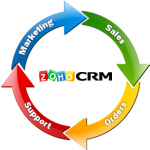How To Gain Respect with Businesses
 Usually I write for businesses and since this is a small business marketing blog that would be appropriate. Today, I want to speak with some of my cohorts in marketing who focus on technology. The social media, web dev, app dev folks of the world apparently need to be reminded that they are often ahead of the rest of society in technology acceptance.
Usually I write for businesses and since this is a small business marketing blog that would be appropriate. Today, I want to speak with some of my cohorts in marketing who focus on technology. The social media, web dev, app dev folks of the world apparently need to be reminded that they are often ahead of the rest of society in technology acceptance.
Think of technology as hip-hop and businesses as your parents in the late eighties-early nineties. Remember hearing, “this stuff isn’t music,” and the ever popular, “rap will never last”? Well, we knew what was up, but Young MC and DJ Jazzy Jeff and the Fresh Prince’s mainstream hits were needed to get the late adopters to finally resign in acceptance. [Read more…]














Follow Us!